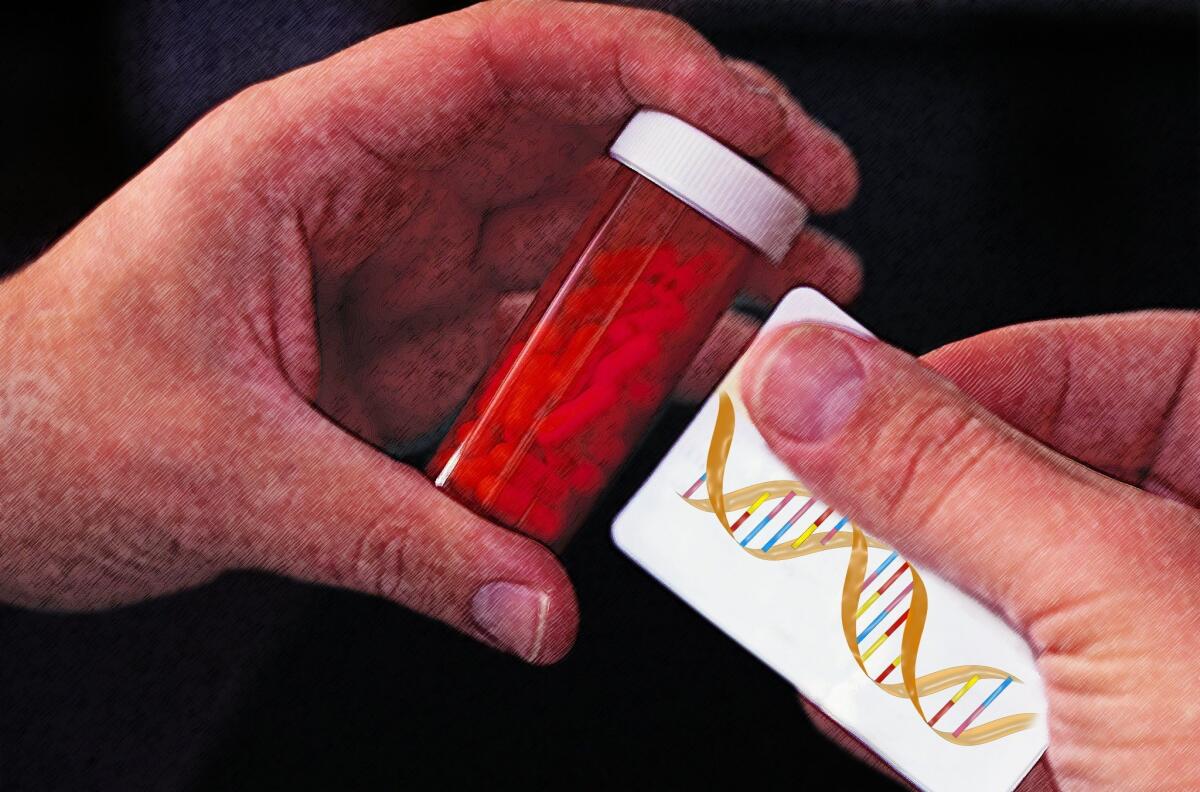Genomes provide clues for treating leukemia, endometrial cancers

- Share via
Efforts to sequence the human genome have revealed genetic risk for disease, and taught us about our early ancestors. Now, efforts to sequence the genomes of cancer cells -- to pinpoint the changes that occur in cancer cells’ DNA when a person has the disease -- are pointing to ways to target cancer treatment.
In two papers released Wednesday, researchers working on the National Institutes of Health’s Cancer Genome Atlas Project detailed new discoveries about two deadly types of cancer: acute myeloid leukemia and endometrial cancer (which arises in the uterine lining.) Both studies revealed subtypes of the diseases -- the different sets of genetic mutations that seem to cause cancers in different groups of patients. Physicians hope someday to be able to look at such subtypes to select the most effective treatments, on a case-by-case basis.
“Developing therapies for each subtype independent of the other may improve outcomes,” said Elaine Mardis, co-director of the Genome Institute at the Washington University School of Medicine in St. Louis, Mo., in a statement.
Mardis was study co-leader of the report about endometrial cancer, which was published in the journal Nature. Analyzing tumor DNA from 373 patients with the disease and comparing it to the DNA in healthy cells, Mardis and her colleagues found four new cancer subtypes -- each distinguished by different types of genetic mutations. They found previously-unknown similarities in the DNA of some high-grade type I endometrioid tumors and type II serous tumors. In the past, those two types of cancers would have been treated differently, but the findings suggest that they may benefit from a similar course of treatment, the researchers said. The team also found similarities between some endometrial cancers and breast and ovarian cancers.
The leukemia study was published in the New England Journal of Medicine and was also coordinated at Washington University. Looking at genetic data collected from 200 patients with acute myeloid leukemia, researchers discovered that on average, each leukemia had mutations in only 13 genes -- a smaller number than in most cancers -- but they found more than 1,800 genes mutated at least once in the 200 samples, suggesting that there are “many different routes that lead to AML,” according to a statement from the university.
The team identified nine subtypes for the disease, and suggested that future research could take advantage of the data, which are publicly available, to learn exactly how specific mutations drive the disease and to pinpoint treatments.
The new papers mark the sixth and seventh cancers analyzed by the Cancer Genome Atlas Project, which has also published tumor genome information on breast, lung, colon, ovarian and brain cancers. (Read more about the breast cancer genome effort here.) Before the effort winds up in June 2014, organizers said, its researchers hope to analyze genomes from 20 cancers.
And the work won’t end there, wrote Harvard Medical School professor Dr. David P. Steensma in an editorial, also published Wednesday in the New England Journal of Medicine. Noting that most of the common genetic alterations associated with acute myeloid leukemia have probably now been found, Steensma wrote that “within two years, the door to major new genetic findings will also close.”
At that point, he added, it will be time for researchers to dig into the details and unearth practical applications for the knowledge. Steensma compared the effort to Meriwether Lewis and William Clark’s explorations of the American West. Less than 100 years after they set out to survey the American West, “the western frontier was declared closed,” he wrote. “But land surveyors did not disappear; today they focus on construction projects and property boundaries.”
Likewise, he added, “the use of genomics in quotidian practice is just beginning.”
For more on cancer genomics, read this 2012 story about efforts to learn about pediatric cancers.





